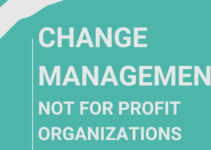Change management risk presents various types of risk factors that would potentially jeopardize and undermine the growth and success of the change initiative. Managing the change risk requires risk identification, analysis, monitoring, tracking, planning, communication, and risk mitigation. Today, we’ll discuss change management risk mitigation; various types of change risks, strategies for risk mitigation, and implementing the change risk mitigation plan.
Types of Change Management Risks
- Operational risk – internal and external factors impacting the company’s daily routine activities and operations
- Reputational risks – negatively impact the public opinion about the company
- Strategic risks – limited or faulty business strategy of the company
- Legal risks – when the company breaks the government rules and faces costly lawsuits
- Compliance risks – when the company violates internal or external standards, regulations, and rules
Strategies for Change Management Risk Mitigation
- Avoidance – taking steps and measures to avoid the incident from happening
- Reduction – conducting risk analysis and taking steps to decrease the probability of risks occurring
- Transference – passing the risk to the third party like buying an insurance plan to cover the risk and damages
- Acceptance – here you accept the risk as it is because the rewards and benefits are much higher
Internal sources of change risks
- Technology change
- Investment of stakeholders
- Process change
- Organizational structure
External sources of change risks
- Industry environment
- Reputation
- Competition
In order to successfully implement the change risk plan, you should follow and execute the systematic approach for the change management to mitigate the risk factors. Here’s the step-by-step guide towards implementing the change management risk mitigation plan as follows;
Implementing Change Management Risk Mitigation Plan
Let’s discuss the steps involved in implementing the change management risk mitigation plan; they’re as follows;
Recognizing the Change Risk Factor
First of all, you should recognize and analyze the risks associated with the change initiative. It comprises studying the complications, impact, and scope of the change project; also analyzes the capacity and preparedness of the involved stakeholders. Some of the main tools and methods that you can employ to perform the change risk analysis; they’re as follows;
- Risk matrix
- Stakeholder analysis
- Pestle analysis
- Swot analysis
The objective of performing change management risk analysis is to know the severity and likelihood of the risk factors; and develop contingency plans and risk mitigation strategies.
Discussing it with Stakeholders
Secondly, you should connect and engage with stakeholders, partners, and employees; and communicate the associated risk factors with the change project and how to manage them. It means letting people know how the changes would impact partners, suppliers, customers, and employees. However, some of the main channels and mediums that you could use to connect and engage with stakeholders are as follows;
- Feedback sessions
- Surveys
- Workshops
- Webinars
- Newsletters
The objective is to develop comprehension, awareness, and acceptance of the change initiative. You should address their question, objections, and concerns while communicating.
Assigning Roles & Responsibilities
Thirdly, you should allocate roles and responsibilities of the change plan to deal with the change risk factors. It means assigning roles and responsibilities involved in the change projects; targets, agents, champions, and sponsors. However, some of the change models and frameworks that you could use to define and allocate roles and responsibilities are as follows;
- Kotter’s 8-Step Model
- ADKAR Model
- RACI matrix
The objective is to make sure collaboration, coordination, and alignment among various change roles to support and analyze their performance.
Implementing Change Activities
Fourthly, you should develop the change risk plan and implement the changes. It means designing and executing the specific tasks and activities relevant to the change goals and objectives; introducing, testing, and training. However, some of the main tools and techniques that you could employ to implement the change project are as follows;
- Agile methods
- Project management software
- Gantt Chart
The objective is to make sure the effectiveness, efficiency, and quality of the change project; tracking and evaluating the performance of the results.
Monitoring Change Results
Fifthly, you should evaluate and monitor the change results for the change risk mitigation strategy. It comprises of gathering and evaluating the change audits, surveys, KPIs, costs, benefits, and impacts. In order to measure and analyze the change results; you could employ the following;
- ROI analysis
- Balanced scorecard
- Smart goals
The objective is to analyze the sustainability, value, and performance of the change project by recognizing and managing opportunities, issues, and gaps.
Improving Change Results
Finally, you should find ways to improve the change strategic approach. It comprises learning and reflecting on the change implementation experiences and applying them to future change projects. However, some of the main tools and techniques that you could employ to amplify the change practices are as follows;
- Communities of practices
- Reporting
- Debriefing
Conclusion: Change Management Risk Mitigation
After an in-depth study of the change management risk mitigation; we have realized that risk mitigation strategy is highly significant for the change management project. If you are learning about change management risk mitigation; then you should keep in mind the abovementioned implementation steps; types of risks, sources of risks, and elements.
Ahsan is an accomplished researcher and has a deep insight in worldly life affairs. He goes Live 3 days a week on various social media platforms. Other than research writing, he’s a very interesting person.


